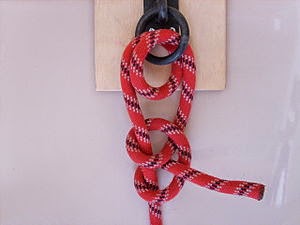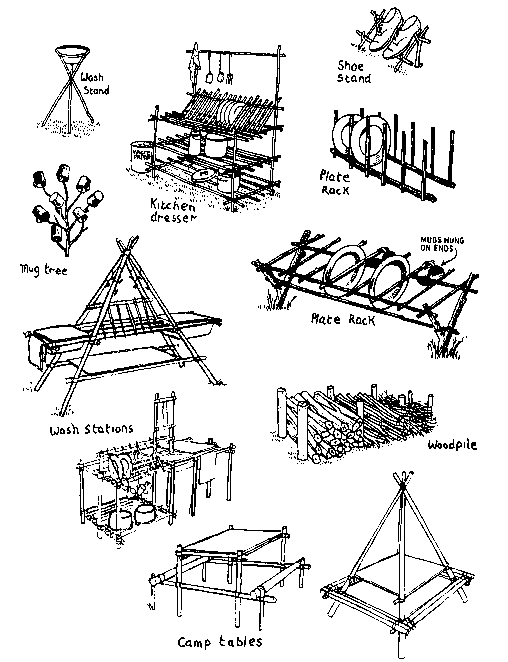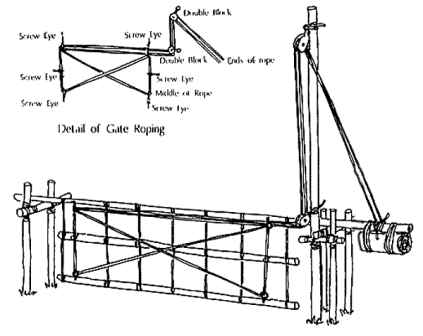Documentary Resources of World Scouting
World Organization of The Scout Movement
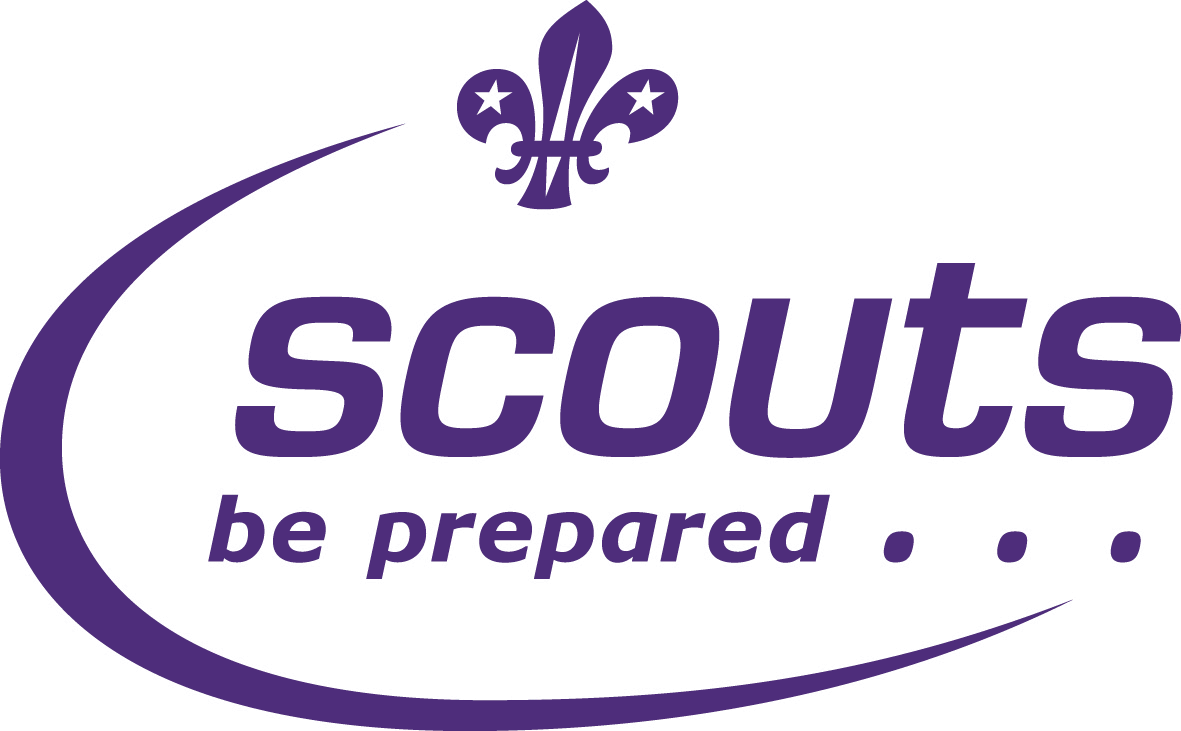 |
| Document of The Scout Association |
Documentary of The Scout Association :-
The Scout Association is the largest Scouting organization in the United Kingdom and the World Organization of the Scout Movement's recognised member for the United Kingdom. Following the origin of Scouting in 1907, The Scout Association was formed in 1910 and incorporated in 1912 by a royal charter under its previous name of The Boy Scouts Association. The current stated purpose of The Scout Association is to "actively engage and support young people in their personal development, empowering them to make a positive contribution to society". The association achieves this through what it terms the Scout Method and through a youth programme for people aged between 6 and 25. The latest published census shows that over 446,000 young people aged 6 to 25 are members of the association, with a further 40,000 young people waiting to join the organization. It is the largest Scout association in Europe, representing 35% of the membership of the European Scout Region. Girls have been admitted to the association since 1976 when they were first allowed to join the Venture Scouts section for 16 to 20 year-olds. This expanded to the entire organization in 1991; although the decision to admit girls was optional, it has been compulsory since 2007, although religious preferences can be accommodated. According to the latest available census, there are 83,363 female members aged between 6 and 25 and a further 36,565 adult women involved in leadership. The Scout Association is open to all faiths and variations to the Scout Promise are allowed in order to accommodate those of different religious obligations or national allegiances. Following criticisms of the lack of provision for atheists, in 2012 the association consulted members about the possibility of creating an alternative Promise for those without a religion, and in October 2013, announced that an atheist version of the Promise would be available from January 2014. The association is headed by the Chief Scout, currently the adventurer and television presenter Bear Grylls, supported by Chief Commissioner Wayne Bulpitt and Chief Executive Matt Hyde (former Chief Executive of the National Union of Students). The association's president is HRH The Duke of Kent and Her Majesty Queen Elizabeth II is a patron of the organisation.

History of The Scout Association :- Formation of The Scout Association,
For the origins of Boy Scouts and the Scout Movement before the formation of The Scout Association see Scouting. The Boy Scouts Association was formed in 1910, in order to provide a national body in the United Kingdom which could organise and support the rapidly growing number of Scout Patrols, which had begun to form spontaneously following the publication of Scouting for Boys in 1908. It was also the wish of Baden-Powell to wrest control of Scouting from his book's publishers as it was felt the Movement was not given the status it deserved as the publishers controlled membership of Scouting.
 |
Membership Badge
of
The Boy Scout Association, used prior to 1967 |
1910 to 1920: Growth,
From its foundation, The Boy Scouts Association began noticing a problem. Originally, Scouting was for boys aged between 11 and 18 and many of the boys also had younger brothers who wanted to participate. There were also many girls who wanted the same thing with Baden-Powell famously encountering a group of "Girl Scouts" at the 1909 Crystal Palace Rally. The solution to the first dilemma was the creation of the younger Wolf Cubs Section, which was trialed from 1914 and openly launched in 1916. However, Edwardian principles could not allow young girls to participate in the rough and tumble, and "wild" activities of the Scouts, and so the Girl Guides were created by Baden-Powell's sister, Agnes, to provide a more "proper" programme of activities. Also, many of those who had grown out of Scouts still wanted to be a part of Scouting resulting in another section, the Rover Scouts, for those over 18 being created in 1918. Scouting was now becoming a global phenomenon as it spread throughout the British Empire. A Royal Charter was granted by King George V on 4 January 1912 which incorporated The Boy Scouts Association throughout the British Empire and gave it "the purpose of instructing boys of all classes in the principles of discipline loyalty and good citizenship". During the First World War, more than 50,000 Scouts participated in some form of war work on the home front. Scout buglers sounded the "all clear" after air raids, others helped in hospitals and made up aid parcels; Sea Scouts assisted the Coastguard in watching the vulnerable East coast. The Boy Scouts Association organised the first World Jamboree for Scouts, held in Olympia, London in 1920 together with an international conference for leaders which founded the World Organization of the Scout Movement of which The Boy Scouts Association was a founding member. Baden-Powell continued to guide the Scouts and Girl Guides, going on world tours throughout the rest of his life until ill health caused him to retire to Kenya in 1938 where he passed away on 8 January 1941. The Headquarters Gazette was first published in July 1909, as the official publication of the Association for adult Scouters and administrators, alongside The Scout, a magazine for youth members which had been launched in April 1908.
1920 to 1967,
In 1929, the Boy Scouts Association hosted the 3rd World Scout Jamboree at Arrowe Park in Cheshire; some 56,000 Scouts from 35 countries attended, making it the largest World Scout Jamboree to date. The first Gang Show, produced by Ralph Reader, opened at the Scala Theatre in London in October 1932. Following the outbreak of World War II, over 50,000 Scouts trained under the National War Service scheme. Tasks undertaken included police messengers and stretcher bearers. The Air Scout branch was launched in January 1941, allowing Scout Troops to specialise in activities related to aircraft and flying. Lord Baden-Powell died in 1941 and was succeeded as Chief Scout by Lord Somers. Starting in 1944, the Scout International Relief Service (SIRS) sent teams of Rover Scouts and Scouters to continental Europe to provide humanitarian aid; ten SIRS teams worked at the recently relieved Bergen-Belsen concentration camp. After years of trial schemes, the Senior Scout Section was officially launched in 1946, allowing Boy Scouts aged fifteen to eighteen years to form separate patrols or troops, with age appropriate activities and badges. Scouts were prominent in their support of the 1948 Summer Olympics, playing leading roles in the open and closing ceremonies at Wembley Stadium and the sailing events at Torbay. The first Bob a Job Week was in April 1949, in which Scouts did small tasks for the public in return for a "bob" (5 new pence) to raise funds for the Association and for "starving Europe". In 1957, to commemorate fifty years of Scouting and the centenary of Baden-Powell's birth, the Association hosted the 9th World Scout Jamboree at Sutton Park in Birmingham.
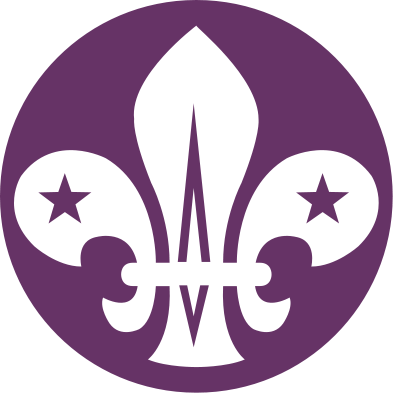 |
Membership Badge
of
The Scout Association Between 1967 and 2003 |
1967 to 2001,
The Boy Scouts Association and its programmes in Britain went largely unchanged until it underwent a major review in the 1960s. The Chief Scouts' Advance Party was formed in 1964 and was sent to survey the organization to see why membership numbers were falling. Their report was published in 1966 and changes were implemented later that year and throughout 1967. As a result, the name of the organisation was changed to The Scout Association and major changes were made to the sections and their respective programmes. The youngest section were now named Cub Scouts, the Boy Scout section was renamed simply as the Scout section and the Senior Scouts and Rover Scout section was replaced with Venture Scouts for 16 to 20 year olds. The Scout Uniform was also changed with the inclusion of long trousers for the Scouts, as opposed to the compulsory wearing of knee-length shorts, and the wearing of a Beret instead of the Campaign hat. The Advance Party Report was not welcomed by all members and a rival report, "A Boy Scout Black Paper", was produced in 1970 by "The Scout Action Group". This provided alternative proposals for the development of the organization and asked for Groups that wished to continue to follow Baden-Powell's original scheme to be permitted to do so. The rejection of these proposals resulted in the formation of the Baden-Powell Scouts' Association. Several developments were made over the following years, including the introduction of co-educational units of boys and girls, initially restricted to the Venture Scouts section in 1976, but from 1991 junior sections were allowed to become mixed as well. Parents involved in Scouting in Northern Ireland also began to organise activities for their children who were too young for Cub Scouts. Originally, only the leaders of the new section, nicknamed Beavers, were members of the association with the youths themselves becoming scouts officially in 1986. In the late 1990s, a Muslim Scout Fellowship was formed, which by the end of 2007, had assisted the establishment of 13 Muslim Scout Groups in England and Wales. Despite these changes, and many other minor ones, Scouting started to fall into a decline through the 1990s with falling membership levels. This spurred a major review into the causes of the decline in 1999.
2001 to Present,
Scouting found itself competing for young people's time against many other extracurricular activities and schools themselves which were increasingly venturing into the same types of activities. In addition, adult leaders became concerned with the growing litigation culture in the UK and the negative stereotype as being old fashioned. Various changes occurred in quick succession following the new millennium. A new uniform, designed by Meg Andrews, was introduced in 2001 that was more modern and practical, with younger sections now wearing sweatshirts and with the shirts now in brighter colours complete with activity trousers. The following year, the association launched their new vision towards 2012 alongside a new youth programme. Changes included the replacement of the Venture Scouts with Explorer Scouts and the Scout Network, for members aged between 14 and 18 and 18 and 25 respectively, and the introduction of a new awards and badge scheme complete with new badges on topics covering more adventurous activities and modern skills including IT and PR. A further change occurred in 2003 when Adult Training was relaunched to be more focused and targeted to the volunteers individual role as opposed to the more general training received before. There was criticism of some of these changes, mostly citing problems with the implementation, although several years into the new structure the Explorer Scout and Scout Network sections have become well established. The new badges drew more mixed reactions from several public figures, with some praising The Scout Association for "moving with the times" and others feeling the changes went "against the Scouting ethos of Baden-Powell". The organization also began to change in its focus, with it being claimed it was becoming more connected with young people and emphasising the adventure and the approximately 200 activities that can be run within a scouting programme. This was seen through publicity materials, the relaunch of national Scout Activity Centres and through the appointments of Chief Scouts Peter Duncan and Bear Grylls in 2004 and 2009 respectively. Census figures for the last few years show an upturn in membership, with The Scout Association in April 2010 announcing the highest rate of growth in British Scouting since 1972, with total membership reaching just under half a million. In 2014, the Association was able to report an increase in youth membership of 100,000 in the ten years since 2004. The Scout Association also hosted many major events during this time including EuroJam in 2005, hosting 10,000 scouts and guides from 40 countries, the 21st World Scout Jamboree in 2007 as well as playing a major role in the centenary celebrations of Scouting that same year, with celebration events organised on Brownsea Island. One of the association's largest current problems is encouraging more adults to volunteer with the scouts to reduce the number of youths currently on waiting lists. This aim was helped when in 2012, the Duchess of Cambridge announced her intention to become a volunteer leader for the association with a group near her Anglesey home. In the decade up to 2014, the number of adult volunteers increased by 14,596 to a total of over 104,000.
Organisation of The Scout Association :-
The Chief Scouts o Robert Baden-Powell 1907–1941
o Arthur Somers-Cocks 1942–1945
o Thomas Corbett 1945–1959
o Charles Maclean 1959–1971
o William Gladstone 1972–1982
o Michael J. H. Walsh 1982–1988
o Garth Morrison 1988–1996
o George Purdy 1996–2004
o Peter Duncan 2004–2009
o Bear Grylls 2009–Present
The Chief Scout is the leader of The Scout Association, and is responsible for determining the direction and policies of Scouting in the United Kingdom of Great Britain and Northern Ireland and Crown Overseas Territories. Bear Grylls is the current Chief Scout after replacing Peter Duncan in July 2009. There is a team of Commissioners who are responsible for the Scouting programme in their respective divisions. The Scout Association is divided into four mainland national groupings: England, Scotland, Wales, and Northern Ireland. Each of these divisions is further broken up into local Counties for England and Northern Ireland, Areas for Wales, Regions for Scotland and a Balliwick in the case of Guernsey, which generally follow the boundaries of the ceremonial counties of Great Britain. The County/Area/Region can then, in most cases, be broken down further into a number of Scout Districts which usually cover a town, some or all of a city or a section of a larger region such as the New Forest. These districts are themselves made up of several Scout Groups. The Groups are the local organisations for Scouting, and are the direct descendants of the original Scout Patrols. Groups can consist of one or more Beaver Colonies, Cub Packs, and Scout Troops and may also have one or more Scout Active Support Units, or an Explorer Scout Unit attached to it. Scout Groups only manage the first three sections, with Explorer Scouts managed by the Scout District and Scout Networks, including those run within a district, controlled from the County or equivalent. Scout Groups are led by a Group Scout Leader whose main role is handling communication between the local District and the Section Leaders and ensuring the Scout Group meets the minimum standard required by The Scout Association. At all levels, Scouts are governed by an executive of trustees, known as executive committees these could be volunteers from the local community who have had ties with Scouting, either themselves or through their children. The executive normally consists of a chairman, secretary, treasurer, and a number of other officers. In Group Executive Committees, Group Scout Leaders and Section Leaders also form part of the committee. Their role is to ensure that the best interests of the young people and the community are served by the Group, District, County, or National organisations. All leaders work as unpaid volunteers, of which there are around 120,000. In addition to this number, the Association employs 198 full-time and part-time staff to support the work of its adult volunteers. Senior volunteers in The Scout Association are called 'Commissioners'. Every County/Area/Region and District is headed by a Commissioner who is responsible for ensuring the Districts/Groups under their jurisdiction meet the standards set by The Scout Association. They receive support from Regional Development Officers in England, who are employed by the Regional Development Service and deployed locally to help support The Scout Association's objectives. Commissioners in the other nations receive support from Field Commissioners, employed and directed differently. District Commissioners report to the County/Area/Regional Commissioner, who in turn report to the UK Chief Commissioner.
Sections of The Scout Association :-
In the Scout Association, there are five sections to cater for youth aged between 6 and 25 years of age.
The first four sections (Beavers to Explorers) are led by a Section Leader and aided by Assistant Leaders, Sectional Assistants, Occasional Helpers and Young Leaders, who are Explorer Scouts trained in leadership techniques. Scout Networks are mainly member led, but are assisted by a Network Leader who ensures that the Network is working within the rules of the association. In addition to adult leadership, the association encourages its members themselves to take on positions of responsibility for their section meetings. This can be through responsibility for a group of members, such as the Patrol Leader and Assistant Patrol Leader in Scouts and Sixers and Seconders in Cubs, or through sectional forums to feedback on programmes. The Scout section also have the role of Senior Patrol Leader, usually someone about to move on to Explorers who overlooks all the patrols, and the members of the Explorer section are openly encouraged to run evenings and to plan their own meetings.
Air and Sea Scouts of The Scout Association :-
Some Scout Groups belong to separate branches of the scouting programme called Air Scouts and Sea Scouts. Both branches follow the core programme in all Sections but can add more aeronautical or nautical emphasis depending on the branch, with some Group branches choosing to be recognised by the Royal Air Force or Royal Navy. In the United Kingdom there are approximately 400 Sea Scout Groups, of which about 25% (101 Groups) are Royal Navy recognised, whilst of 117 Air Scout Groups, 43 are recognised by the RAF.
Adult ranks :-
There are a variety of different positions, ranks and roles that exist for adults. The highest roles in the association are the honorary positions of Patron and President which is taken by the Head of State and a member of the Royal Family respectively, currently Queen Elizabeth II and The Duke of Kent. Below these are the members of UK Headquarters including the Chief Scout, who is honorary head of Scouting in the UK and the public face of scouting, and the UK Chief Commissioner, who is in charge of the volunteers in the organization and of the other commissioners. Below these are the Commissioners for the Nations, Regions, Counties, Areas and Districts all of whom are assisted by deputies and assistant commissioners who can oversee and advise on a particular area of responsibility - for example an Assistant District Commissioner for Beaver Scouts particularly ensures that that section in the district is abiding to the Scout Association's rules. The final managerial role in the organization is that of the Group Scout Leader and their Assistant, who are both in charge of a local scout group. All of these roles are uniformed and for those volunteer roles from County level downwards training is required in the basic values of Scouting, safety and child protection, inclusion and advanced managerial skills to achieve their Wood Badge. At the local sectional level, a section is run by a Scout Leader, who is in overall charge of the section, and by Assistant Scout Leaders, who assist the Leader in their role. These roles are uniformed and also require training to achieve their Wood Badge, although their training content consists of the basic values of Scouting, safety and child protection, inclusion, camping and scout skills and administration. They are also required to complete First Aid every three years. Below leaders are the uniformed role of Sectional Assistant and the non-uniformed role of Occasional Helper. The Sectional Assistant has to complete basic training consisting of the values of scouting, safety and child protection only while an occasional helper is a non-uniformed role and requires only to have a criminal records check by the Disclosure and Barring Service. In addition, there are Young Leaders who must complete training in child protection and safety and then have the option to complete further modules on topics that mirror the adult training programme. Adults can also become members of Scout Active Support Units that provide a variety of services to Scouting at Group, District or County/Area level. These units allow adults to support Scouting activities without having the full-time commitment of a leadership role.
Progressive award scheme :-
Throughout all the sections in scouting, a progressive award scheme operates which forms a major part of the scout programme and promotes a consistent commitment to the scout programme. There are six awards as part of the scheme, five of which are Chief Scout's awards and culminate in the Queen's Scout award (King's Scout prior to 1953).
 |
| The Queen's Scout Award Badge |
The first three awards, the Chief Scout's Bronze, Silver and Gold award, are the highest possible awards achievable in Beavers, Cubs and Scouts respectively. To achieve these awards, a number of challenge badges must be previously obtained, demonstrating a wide range of skills, in addition to a personal challenge. The final three awards, The Chief Scout's Platinum, Diamond and the Queen's Scout award are all available in the Explorer Scout and Scout Network sections alone. The awards mirror the requirements of The Duke of Edinburgh's Award at Bronze, Silver and Gold level respectively, consisting of a period of time volunteering in the local community, a prolonged physical activity, the advancement of a skill and the partaking of an expedition, allowing a participant to partake in both the DofE and the award at the same time. In addition, these three awards do not have to be completed in order, and participants can skip straight to a specific award, although additional work is involved. Achieving the Queen's Scout award is seen as a significant event on a national scale; recipients of the award are invited to join the St George's Day service at Windsor Castle the year after completing the scheme, and parade before The Queen. The progressive award scheme was developed from original awards and classifications used since the origin of scouting in 1907. These lay with the award of 'First' and 'Second' class standards within the different sections, and with the creation of the King's Scout award. These awards focused on the values of service and basic scouting skills. Following a review in the 1960s, the class standards were dropped and replaced in Cubs by arrow awards and in Scouts by the 'Scout Standard', 'Advanced Scout Standard', and the 'Chief Scout Award'; meanwhile the renamed 'Queen's Scout' award was changed to focus on long-term service and commitment as well as the completion of an expedition lasting four days and fifty miles. Further changes occurred a few decades later. The Cub arrows were replaced in 1990 with the 'Cub Scout Award', 'Adventure Award' and 'Adventure Crest' award, while the Scout Standards were replaced in 1983 with the 'Scout Award', 'Pathfinder Award', and 'Explorer Award' - the Chief Scout's Award remained the highest award for the Scout Section. The 'Venture Scout Award' was also created for the senior section as an intermediary stage to the Queen's Scout Award, as were additional awards for Beaver Scouts. All these awards were abolished or changed following the introduction of the current 6-25 programme in February 2002.
Promise and Law :-
The Scout Promise is made by all members of The Scout Association from the Scout section upwards, including Leaders:
On my honour, I promise that I will do my best,
To do my duty to God and to the Queen,
To help other people,
And to keep the Scout Law.
Additional variations of the promise are used for different faiths or for members from other countries, whose allegiance is pledged to the country and not the monarch. For the two younger sections, a simpler promise is used:
Cub Scouts utilise the normal promise with the omission of the opening 'On my honour' and a change in the final line "to keep the Cub Scout Law", while beaver scouts use a different promise altogether:
I promise to do my best,
To be kind and helpful,
And to love God.
In addition to the promise, there is a Scout Law which dictates what qualities a scout should hold. The Scout Law is as follows:
1. A Scout is to be trusted.
2. A Scout is loyal.
3. A Scout is friendly and considerate.
4. A Scout belongs to the world-wide family of Scouts.
5. A Scout has courage in all difficulties.
6. A Scout makes good use of time and is careful of possessions and property.
7. A Scout has self-respect and respect for others.
This law is used for all sections except Cubs and Beavers. Beaver Scouts have no law, as these values are to be demonstrated through the meetings themselves. The Cub Scout law is different again:
Cub scouts always do their best,
think of others before themselves
and do a good turn every day.
The motto of the Scout Association, and of scouting as a whole, is 'Be Prepared'. These were explained in the original Scouting books and was expanded in a series of promotional posters for the sections in the early 2000s.
 |
| Scouting for Boys |
Variations of the Promise :-
There are permitted variations to accommodate those whose faith or national allegiance give rise to problems with the wording of the "core" Scout Promise. The Scout Association expects that the phrases "...duty to God‟ and "...to love God" will suitable for most faiths "including Christians, Hindus, Jews, Muslims and Sikhs". Muslims who have difficulty with the phrase "On my honour" because of the Islamic proscription of swearing oaths, are able to say "In the name of Allah, the Most Beneficent the Most Merciful…" instead if they prefer. Also, "...duty to Allah and to the Queen" may be used. Hindus and Buddhists may promise "...duty to my Dharma". Foreign nationals resident in the United Kingdom are able to promise to do their "...duty to God and to the country in which I am now living", although British subjects must include the Queen in their promise. In 2012 the Scout Association reviewed its fundamentals and launched a consultation to ask its members whether an alternative version of the Scout Promise should be developed for atheists and those unable to make the existing commitment. In 2013 it was announced that the consultation had led to the addition of an alternative promise for humanists and atheists. Taking effect on January 1, 2014, members can choose to replace "duty to God" with "to uphold our Scout values". The change has been welcomed by representatives of the Church of England, the Roman Catholic Church, the Free Churches Group and the British Humanist Association. The alternative promise takes the following form:
On my honour, I promise that I will do my best,
To uphold our Scout values, to do my duty to the Queen,
To help other people,
And to keep the Scout Law.









